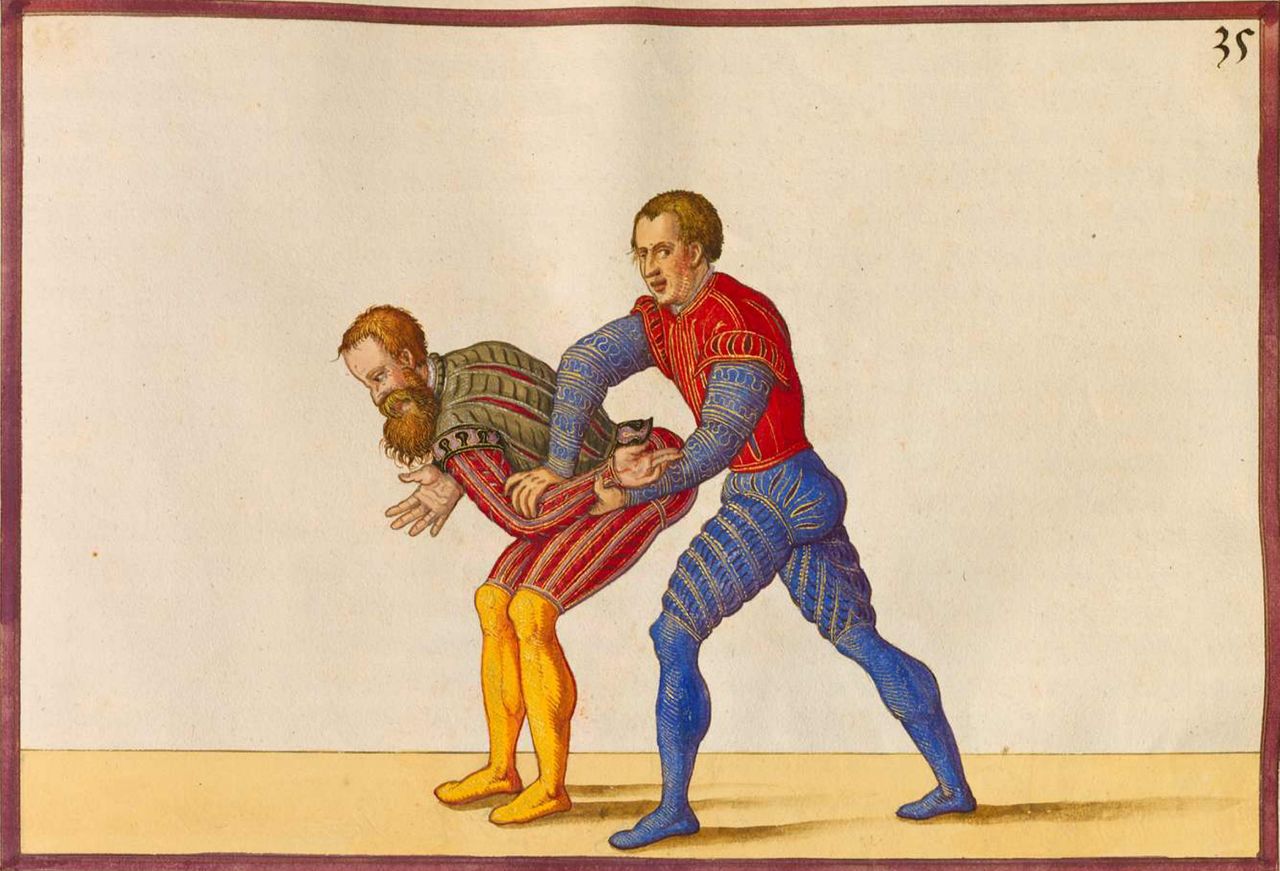Curriculum
The medieval and renaissance wrestling sources are often difficult to navigate without prior instruction. The USHRA curriculum provides a framework of Historical Ringen techniques which can be easily broken down and used to create ongoing lesson plans. Additionally, the curriculum uses technique names in the original language when available in an effort to help create a technical vocabulary for practitioners of the art.
Curriculum outlines available to download below under training resources.
The USHRA curriculum was developed with the following concepts in mind:
Art and application: The USHRA is focused on both reviving the practice of Historical Ringen as well as promoting academic research about the art. A well-rounded practitioner should know the context of Historical Ringen, be able to identify defining characteristics of the art, and safely apply techniques in sparring while also being able to demonstrate the application of more dangerous techniques in a controlled environment.
Basics first: Basic techniques and concepts are taught first and later expanded upon to form a deeper understanding of the art. Additionally, students will explore simple historical sources before complex - on a scale from “clear text and images (simple)” to “large passages of text alone (complex)”.
Safety first: Techniques that are safe for sparring and competition are taught first so that students can participate in sparring and competition early in their training in order to develop a better understanding for application of the art. In higher levels students will train techniques which may cause injury more directly (ie. Joint locks and strikes to vulnerable areas). This approach will yield competent wrestlers who are able to choose between a relatively safe or dangerous technique in a variety of scenarios.
.
Training resources
In addition to providing free access to outlines of the curriculum the USHRA will continue to produce and update relevant training resources.
Level 1
Introduction to fundamental wrestling concepts. Level 1 covers basic throwing mechanics, gripping positions at the arms and shoulders, and essential break-falling skills. The techniques in Level 1 come from a variety of Ringen primary sources.
level 2
The basic repertoire developed in Level 1 is expanded upon and the concepts learned in Level 1 are used to explore slightly more advanced concepts and techniques. As in the previous level, the techniques for Level 2 come from a variety of Ringen primary sources.
Level 3
In Level 3 the focus shifts from studying the basics to working directly with the source manuscripts. Due to its short length, and relatively clear language medieval master Andres Lignitzer's lessons are used as a guide to introduce interpretive work straight from the primary source material. Advanced concepts from other manuscripts, and basic joint locks are explored in Level 3 as well.
Level 4
continues to explore advanced concepts and introduces the unterhalten and aufstehen pinning techniques. This level also works through the first half of the wrestling master Ott's lessons on Ringen in which previously studied techniques should be identifiable by the practitioner.
.
Level 5
The second half of Ott's lessons are covered. Level 5 also explores some particularly dangerous wrestling techniques and auxiliary Ringen concepts such as strikes.





